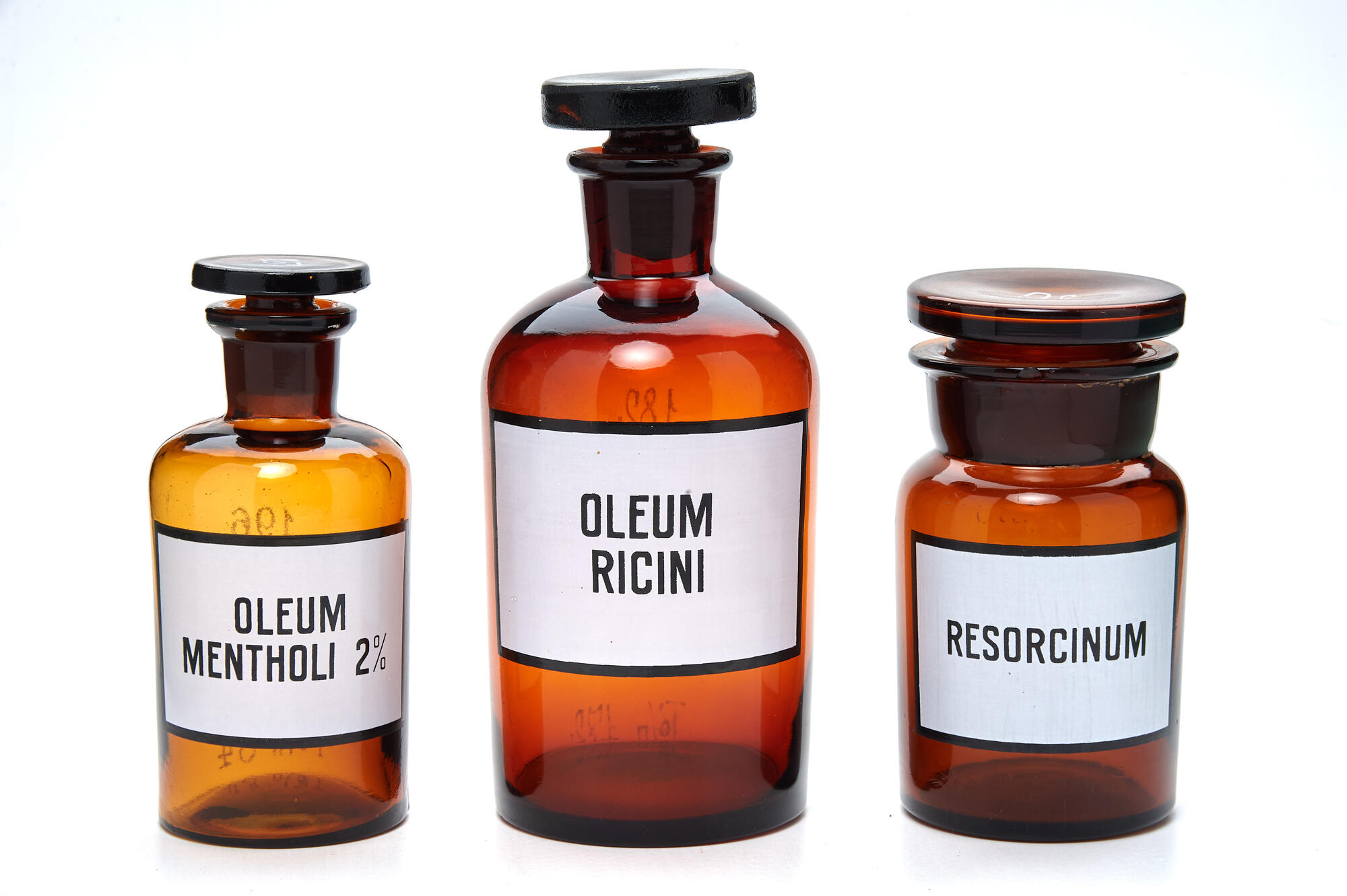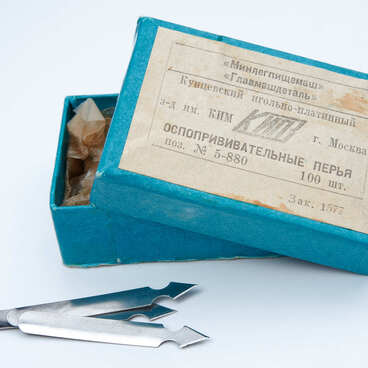The exhibition ‘Old Tula pharmacy’ features glass-stoppered bottles. They were used in the city pharmacy No. 2, which was located in the museum building until 2011.
Glass-stoppered bottles are cylindrical pharmacy glassware with a ground stopper or cover, designed to store medicines, auxiliary substances, and plant products. Glass-stoppered bottles are not the place of storing medicines but are only used in the process of preparing them.
In the old days, the specifics of pharmacy production assumed the presence of a large number of various glassware for making, storing and dispensing medicines. The glassware in the pharmacy could be classified according to their purpose: display (demonstration), laboratory and storage containers. The glassware could perform several functions at once. For example, some containers were fancy-looking, and therefore they were often used for window dressing.
The appearance of the pharmacy interior was very important. Tastefully decorated showcases and cabinets attracted visitors and helped to increase the number of orders and sales. Large spherical or pear-shaped containers filled with bright liquids were often displayed in the windows of the pharmacy. In Victorian England, for example, they not only attracted attention but also testified to the apothecary’s skill as a chemist. For the decoration of the showcases, beautiful porcelain dishes, shaped earthenware jars with albarello paintings were used. At the end of the 19th century, the rich decor was replaced by simplicity and conciseness of design.
In the late 19th-early 20th centuries glass-stoppered bottles did not vary greatly in shape, but their color, texture, and labels corresponded to certain characteristics of the content. Glass-stoppered bottles were made of transparent or dark brown glass, which protected medicines from the effects of sunlight, less often of cobalt, ruby, and yellow. As a rule, toxic substances were stored in blue and green glass-stoppered bottles. Sometimes pharmacists ordered glass-stoppered bottles with a ribbed surface to store such products, so that they could be identified, including by touch. Glass-stoppered bottles were closed with a tightly ground stopper.
The color of the label was also informative. Dangerous substances (List A) — poisons and drugs — were marked with a white inscription on a black background. For potent substances (list B), red letters on a white background were used. A black inscription and a white background indicated that substances that do not pose a danger are stored in the glass-stoppered bottle. The labels also indicated a single and daily dose of intake.



